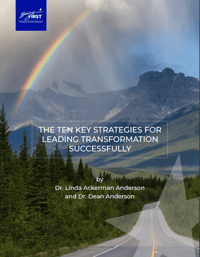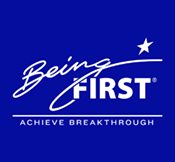You're an executive, and you’ve come up with brilliant ideas to transform your organization into a better, more successful company. Now, all you have to do is enact these major changes and your organization will be better for it. But wait - who will lead this change?
Unclear change leadership can lead to confusion in roles, governing structure, decision-making, resourcing, timeline, prioritization, and conflicts with daily operations.
Who Should be Placed in Change Leadership Roles?
Your first thought might be that you’re the best candidate for the job. After all, you came up with the ideas and have the most passion about this new direction. You know what it takes to run a successful business, and you have years of experience running operational initiatives. However, you may not be the best person to head up this major change initiative.
Governing large-scale change requires clear and careful planning, as there are critical roles that must be staffed with the right people. Your role may certainly be to sponsor the change, but beyond that, others should take over. For all the critical change leadership roles, those filling them must have the time, energy, attention, and skill to devote to the change as a top priority. Leading change from the margin never suffices.
What Makes an Effective Change Leader?
They must understand the business strategy and how their initiative supports its execution. They also must understand the organization’s strategic goals and how the change strategy can help deliver them. They should be a people-person, with effective communication and listening skills. They should appreciate the value and necessity of early and robust stakeholder engagement and communications, and should be more of a “co-creative leader” than a “command and control leader.”
They should be “process thinkers,” meaning, that they should orient to how things will unfold over time in a contiguous, integrated fashion, rather than be jumping from isolated event to isolated event. They must see how all the variables in your change effort connect, and be able to manage that complexity as it unfolds over time. And equally important, they should have credibility with other leaders and be respected in the organization. Choosing such leaders sends a critical message that “this change effort is important.”
What Change Leadership Roles Should You Implement?
There are several roles that are typically necessary to support successful organizational change:
Sponsor: the highest ranking executive in charge of the change and its outcomes; responsible for setting up and supporting the conditions for success
Change Process Leader: person ultimately responsible for ensuring that the change process is designed and implemented successfully, from start to finish
Change Leadership Team: responsible for navigating the strategic change process as it unfolds over time so it delivers the optimal change solution while engaging stakeholders and their commitment; led by the change process leader
Change Initiative Leads: leaders of workstreams and/or sub-initiatives within an overarching effort; leads those change project teams
Change Project Teams: responsible for the success of workstreams and/or sub-initiatives; ensures the best change solution is designed and implemented so adoption and sustainment occur
Change Consultants: internal or external advisors to all other change roles; educates; raises issues early;ensures cultural and human elements are addressed adequately
The exact job responsibilities outlined above will vary depending on your particular organization and the scope of the change that you wish to implement. However, it is important that each person involved understands their change role and their specific responsibilities, who has what decisions and how they will be made, and how they are to interface with everyone else. With all this clear, things get done and change has a much better chance of success!
Related eBook:
The Ten Key Strategies for Leading Transformation

Through 40 years of observing and supporting large-scale change and transformation in Fortune 500, government, global NGOs and public service organizations, we’ve identified these ten Best Practice strategies for leading transformation successfully.
Please complete the form to download your eBook:
Related Webinar:
How to Build Leadership Commitment to Transformation
In this on-demand workshop, we explore how to ask for, generate and nurture leadership commitment. The answer is not what you think, but it will radically improve your ability to get leaders committed. Developing this skill is one of the ten key strategies for ensuring success in any organization's transformation.

